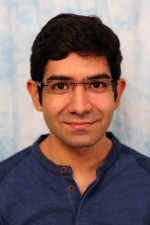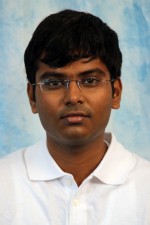Learning Neural Parsers with Deterministic Differentiable Imitation Learning
Abstract: In this work, we explore the problem of learning to decompose spatial tasks into segments, as exemplified by the problem of a painting robot covering a large object. Inspired by the ability of classical decision tree algorithms to construct structured partitions of their input spaces, we formulate the problem of decomposing objects into segments [...]
Carnegie Mellon University
Integrating Structure with Deep Reinforcement and Imitation Learning
Most deep reinforcement and imitation learning methods are data-driven and do not utilize the underlying structure of the problem. While these methods have achieved great success on many challenging tasks, several key problems such as generalization, data efficiency and compositionality remain open. Utilizing problem structure in the form of architecture design, priors, domain knowledge etc. may [...]
Carnegie Mellon University
Learning Reactive Flight Control Policies: from LIDAR measurements to Actions
Abstract The end goal of a reactive flight control pipeline is to output control commands based on local sensor inputs. Classical state estimation and control algorithms break down this problem by first estimating the robot’s velocity and then computing a roll and pitch command based on that velocity. However, this approach is not robust in [...]
Carnegie Mellon University
Transparency in Deep Reinforcement Learning Networks
In the recent years there has been a growing interest in the field of Explainability for machine learning models in general and deep learning in particular. This is because, deep learning based approaches have made tremendous progress in the field of computer vision, reinforcement learning, language related domains and are being increasingly used in application areas [...]
Carnegie Mellon University
Geometric approaches to motion planning for two classes of low-Reynolds number swimmers
Microrobots have the potential to impact many areas of medicine such as microsurgery, targeted drug delivery and minimally invasive sensing. Just like microorganisms themselves, microrobots developed for these applications need to swim in a low-Reynolds number regime which warrants locomotive strategies that differ from their macroscopic counterparts. To this end, Purcell’s three-link planar swimmer has [...]
Carnegie Mellon University
Autonomous 3D Reconstruction in Underwater Unstructured Scenes
Abstract Reconstruction of marine structures such as pilings underneath piers presents a plethora of interesting challenges. It is one of those tasks better suited to a robot due to harsh underwater environments. Underwater reconstruction typically involves human operators remotely controlling the robot to predetermined way-points based on some prior knowledge of the location and model [...]
Carnegie Mellon University
Wire Detection, Reconstruction, and Avoidance for Unmanned Aerial Vehicles
Abstract Thin objects, such as wires and power lines are one of the most challenging obstacles to detect and avoid for UAVs, and are a cause of numerous accidents each year. This thesis makes contributions in three areas of this domain: wire segmentation, reconstruction, and avoidance. Pixelwise wire detection can be framed as a binary [...]
Carnegie Mellon University
Multi-Robot Routing and Scheduling with Spatio-Temporal And Ordering Constraints
Abstract We consider the problem of allocation and routing a fleet of robots to service a given set of locations while minimizing makespan. The service start times for the locations are subject to AND/OR type precedence constraints. Spatio-temporal constraints prohibit certain states from all feasible schedules where a state is defined as a tuple of [...]
The Art of Robotics: Toward a Holistic Approach
I arrived at the Robotics Institute two years ago looking for a good project, something tangible and preferably related to legged locomotion. Instead, I met Matt Mason and started to think about the big picture, ask the big questions. What is manipulation? What is robotics? What makes robotics particularly hard? To answer these questions, I [...]
Carnegie Mellon University
Mapping gamma sources and their flux fields using non-directional flux measurements
There is a compelling need to determine the location and activity of radiation sources from the flux that they generate. There is also a need to create dense flux maps from sparse measurements. This research solves these dual problems. An example of a situation where these capabilities would be vital is at the location of [...]









